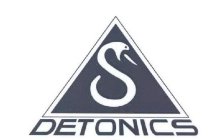 | |
| Company type | Privately held |
|---|---|
| Founded | ~1976 |
| Headquarters | Millstadt, Illinois (since 2007) , United States |
| Products | Compact 1911-style pistols |
Detonics was an American firearm manufacturing company founded around 1976, which had existed under several owners and variants of this name. Detonics was best known for its innovative design of compact self-loading pistols, such as the Pocket 9 and the 1911-style Combat Master. [1] [2]


